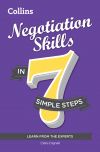Правообладателям!
Представленный фрагмент книги размещен по согласованию с распространителем легального контента ООО "ЛитРес" (не более 20% исходного текста). Если вы считаете, что размещение материала нарушает ваши или чьи-либо права, то сообщите нам об этом.Читателям!
Оплатили, но не знаете что делать дальше?
Текст бизнес-книги "Emotional Confidence: Simple Steps to Build Your Confidence"
Автор книги: Gael Lindenfield
Раздел: Жанр неизвестен
Текущая страница: 1 (всего у книги 2 страниц)

To Kathryn Edwards
– to whom I shall be everlastingly grateful for underpinning my own emotional confidence with so much practical and emotional support during those testing few weeks following the death of my daughter Laura
Contents
Cover
Title Page
Dedication
Acknowledgements
Note to 2014 Edition
Introduction
How to Use this Book
Why We Need Emotional Confidence
25 Compelling Reasons for Building and Maintaining Emotional Confidence
Part 1: Three Keys to Building Emotional Confidence
Key 1: Tame Your Temperament – with Emotional Understanding and Skill:
Understanding How Feelings Work
Skills for Taking Control
Key 2: Soothe Your Sensitivity – with Effective Emotional Healing:
Why We Need to Heal Emotional Wounds Promptly and Efficiently
The Emotional Healing Strategy
Key 3: Harness Your Habits – with Positive Strategies for Runaway Feelings:
Guilt
Shame
Anger
Fear
Jealousy
Envy
Apathy
Unbridled Love
Part 2: Maintaining Emotional Confidence
Further Reading and Resources
By the same author
List of Searchable Terms
Other Titles in This Series
Copyright
About the Publisher
Acknowledgements
I would like to thank everyone who has given me and my family emotional and practical help during the very difficult months after my daughter, Laura, died. Without your support this book could certainly not have been written.
I am particularly grateful to my editor, Wanda Whiteley, and many other staff at Thorsons who always responded with such care and concern when I informed them of yet another setback in the writing of this book. I know that the late delivery of the manuscript has caused pressure to very many people who have been involved in its production and I am so appreciative of their willingness to work at breakneck speed to enable us to reach our deadline date.
I would also like to thank Tiffany Thomas for helping me with the background academic research to the book.
Finally, I would like to thank my husband Stuart, for his unfailing emotional support and for getting up at the crack of dawn to do yet another edit on yet another book.
Note to 2014 Edition
Since writing this book, interest in the workings of our emotions and how to manage them better has soared. So too have the level of research and the development of new therapeutic techniques escalated. However, I believe that this self-help guide remains a very useful tool for anyone who wants to try to understand how to manage their feelings in everyday life much better. I still use the exercises and techniques in my work with clients.
I also found that re-reading this book was a useful reminder for me! Gaining better control of my own feelings was crucial to the building of my own confidence. And, because many of my own unhelpful emotional responses and behaviours leap back into action when I am overly stressed, I need to keep the wisdom and techniques in this book in the forefront of my mind. I hope that you will find this new edition enlightening and helpful.
Introduction
Challenging but highly justified questions which have been thrown at me throughout my career, not just by interested or cynical others but by my own carping conscience. When writing a book, in particular, I have had to learn to live with this kind of unrelenting internal inquisition. But never until I took on the task of this one has ‘real life’ put me and my manuscript through so many continual testing trials.
For many years I had been wanting to write a self-help programme to help others develop the emotional skills which I had to acquire for myself in such a random ‘pot-luck’ fashion over several decades. For most of my early adult life my ‘uncontrollable’ feelings had wrought havoc on my life and health. Learning how to take control of the emotional side of me had been a crucial factor in the building of my own self-confidence, had enabled me to be the kind of person I could respect and had given me the kind of lifestyle and relationships I had always wanted.
| Do you really practise what you preach? The theory’s fine but have you tried it out in real life? Everyday problems – yes, but would you and your strategies stand the test of a major trauma? |
I was therefore thrilled when, in January 1996 at a brainstorming session with my editor, I finally settled on the title and plan for this book. I returned from London inspired and motivated. My brain was buzzing with exciting ideas for new strategies and exercises. A few days later, on the morning of Sunday, January 28th, I sat with my diary and began to outline my writing schedule. By 9 o’clock that same evening, however, my own emotional confidence had completely collapsed: my 19-year-old daughter Laura had been killed in a freak car accident and I was living my most dreaded nightmare.
I plunged hysterically into an uncontrollable whirlpool of intense grief and deep despair. Not only did I think I would never again recover my emotional equilibrium, I didn’t actually want to do so. When the following day I began to be taunted by an inner voice which said, ‘Now, let’s see if your fancy theories can get you through this one, then!’, I found I didn’t care. My whole life, not just my work, seemed pointless. I no longer felt the person I thought I was. I rejected comfort and was useless at comforting. I was quite unable to help even those whom I loved and who shared my pain.
But my inner voice was wrong. Eighteen months later, not only had my emotional health been repaired, I am convinced that it had also been strengthened. Furthermore, I wrote this book in spite of a number of other serious setbacks.
So it was with increased confidence in its contents that I wrote this Introduction. I am quite sure that without the knowledge and skills which I am now sharing I would not have had the strength or motivation to take up my life again in the way that I know Laura would have wanted me to do.
What Is Emotional Confidence?
This is a short-hand term which I use to describe a particular component of self-confidence. We sense it within ourselves when we know we can rely on our ability to be in full control of our feelings.
When I am working on changing some aspect of myself or my behaviour, I have always found it helpful to keep an image of an ideal role-model in my mind. Although ‘good-enough’ standards are all that are required, this imaginary, faultless figure is an inspirational and a useful measuring tool.
PORTRAIT OF A PARAGON
Should some fortunate person ever possess rock-solid, enduring emotional confidence, we would expect them to be able to:
• freely experience a full rich range of emotions from deep despair and gut anger to exhilarating joy and tender love without ever worrying that their heart will rule their head – so they would never think or say:
‘I don’t know what’s happened to me, I just feel dead inside’
‘Nothing seems to get me excited anymore’
‘I’ve lost my sense of fun’
‘I never get angry – what’s the point?’
‘I haven’t cried for years’
• be fully aware of what they are feeling at the time they are experiencing an emotion – so they would never think or say:
‘I don’t know what I feel’
‘When I left there I realized just how angry I was, I only wish that I had said …’
‘It wasn’t until she started flirting with someone else that I realized I really loved her’
‘I’d been so busy that I hadn’t noticed how lonely I was beginning to feel’
• keep their emotional responses under their own control – so they would never think or say:
‘I loved him/her too much – I couldn’t stop myself from …’
‘I just flipped – I don’t know what came over me’
‘I suddenly found myself being as jealous/envious as hell, so I couldn’t resist …’
‘I started to blush and sweat – I had to leave’
‘The tears just came – I couldn’t hold them back’
• readily and steadily fire themselves up with motivational feeling – so they would never think or say:
‘I set goals, but then I just seem to lose interest’
‘I want to change, I’m just too lazy to make the effort’
‘I just don’t care enough anymore – even though I know I ought to’ ‘I’ve lost heart’
• express their feelings at the ‘right’ time and in the ‘right’ place, and to the ‘right’ person – so they would never think or say:
‘I started to shake and I couldn’t stop – it was so embarrassing’
‘I really love her, but I always seem to choose the wrong moment to show it’
‘We were driving into work and I just flew at him – he had to slam on the brakes’
‘I was so mad at him that, when I got home, I just snapped at everyone’
• respond sensitively and sensibly to the emotional states of other people – so they would never think or say:
‘I always seem to put my big foot in it, and embarrass everyone’
‘I just didn’t notice how anxious he was – if I had, I’d have stopped pressurizing him’
‘I didn’t realize she was in such a bad mood – I ought to have known because …’
‘He looked so disappointed, I couldn’t resist – I was stupid because …’
‘She was so angry, I just clammed up even though …’
Unless after reading this you have discovered yourself to be the only paragon of emotional confidence on earth, this book was written for you!
How to Use this Book
I have designed this self-help programme so that you can work on it over a set period of time, either on your own or in a small group. Reading it and completing the exercises will, first, give you more understanding of how your emotions work, and secondly improve your ability to manage specific feelings. I am hoping that after using it in this way you will continue to keep it in a handy position, because I have tried to design it in such a way that it can be a useful practical tool. Should you ever experience a problem with a feeling in the future (and who won’t?!), you will be able to dip into the relevant section, take some support and remind yourself of a strategy which will help you to regain your control.
A Quick Tour through the Book
WHY WE NEED EMOTIONAL CONFIDENCE
This section is designed to boost your motivation, so I have listed 25 reasons for building and maintaining emotional confidence. I hope that these will inspire you not just to skim lightly through the rest of the book but to work mentally as you read!
PART 1: THREE KEYS TO BUILDING EMOTIONAL CONFIDENCE
Key 1: Tame Your Temperament– with Emotional Understanding and Skill
In Understanding How Feelings Work I have given a brief explanation of how our emotional responses function, and a simple summary of research findings we have to date. There are exercises and check-lists which will help you apply this theory to your own everyday experience of your feelings.
In Skills for Taking Control you will find a questionnaire designed to help you assess the level of your current emotional skills. Should you find that these need improving, I have also given you some suggestions and examples of a few of my own favourite techniques.
Key 2: Soothe Your Sensitivity – with Effective Emotional Healing
In this section you will find a fully illustrated explanation of my Emotional Healing Strategy for dealing effectively with feelings such as sadness, hurt and disappointment. I explain this strategy in depth, with appropriate exercises.
Key 3: Harness Your Habits– with Positive Strategies for Runaway Feelings
In this section you will find tips, strategies and exercises to help you take control of your self-sabotaging emotional habits. It first introduces a general Quick-Fix strategy called ACHE; then the focus shifts to eight specific emotions which many people find difficult to control at times. These are:
| Guilt | Fear |
| Shame | Jealousy |
| Envy | Apathy |
| Anger | Unbridled Love |
Even if these are not the emotions you tend to find difficult, you should be able to use the approaches and exercises offered to work on the ones with which you do have difficulty.
PART 2
This includes some suggestions for maintaining emotional confidence and helping to foster it in others. It also includes the Further Reading and Resources chapter, the Index and some blank pages for your own notes.
To Read On or Not to Read On – Is that Your Question?
You have probably gathered by now that this book is not necessarily going to be a quick or easy read. You may even have glanced through its pages and begun to feel a little daunted. This is an understandable reaction and one which is very familiar to me. In fact, whenever I am faced with changing any aspect of my feelings or behaviour, I feel this way. I then find myself automatically thinking of a million and one reasons why I don’t need or want to take up the challenge, now or ever. I start to put up a convincing case for not having the time or the energy to devote to the work, or I don my cynic’s hat and focus on the other problems this work won’t solve, or I persuade myself that I haven’t the difficulty after all!
In my case, this self-sabotaging thinking process is merely a pre-programmed response to uncomfortable feelings (usually of fear and anxiety). I have learned to take some ‘time out’ – to calm down and take control of my feelings before making my decision. This usually involves doing a familiar activity which both relaxes and reassures me (e.g. a warm aromatic bath or a good clear-up in the kitchen accompanied by my favourite music). I find I am then more willing and able to look at the challenge in a more rational way.
So, before making your decision to read on, why not give yourself a nurturing and encouraging treat? Once you have done that, set aside some time to dip in and out of this book for a while. Read the Contents page and mark the bits which are a priority for you. Then (this is the crucial and often forgotten step!) you will need to take your diary and set aside some chunks of time over the next few weeks to work through your chosen sections step by step at a pace that suits you and your lifestyle. Hopefully, the task of building emotional confidence will then seem much more manageable, and instead of feeling daunted or anxious you will have fuelled yourself with an inspiring emotion – excitement!
Enjoy the journey, and be generous with the breaks and treats!
Why We Need Emotional Confidence
For many of you reading this book, taking on the challenge of giving yourself emotional confidence may be the hardest kind of personal development work you ever do. By comparison, it is relatively easy to learn new skills (such as how to give professional presentations or dress in an eye-catching manner) and relatively easy to learn how to change specific aspects of your behaviour (for example, giving and taking criticism in a constructive and effective way). But to reach the point where you feel confident that you will always have enough emotional control to be able to use this learning whenever you choose can be a much harder (and a more lengthy) process.
I first became aware of this fact when I started teaching assertiveness training. I was thrilled to find this new technique of helping people. Its strategies were quick to learn, great fun to teach and, as I knew from my own personal life, undoubtedly effective. People would leave my courses on a great ‘high’ because in eight short sessions they had acquired the social tools which everyone else around them seemed to have and which they had longed for all their life. They now had a bag of tried-and-tested ‘tricks’ to ensure that they could make their voice heard, and stop others in their tracks when they put them down or didn’t respect their privacy or rights. But after a while I began to notice that many people couldn’t use these amazing new tools simply because their emotions stopped them from doing so. They would tell me that, although they knew their assertive strategies would work, they often felt too frightened, too guilty, too angry, too ashamed or even too choked up with love and compassion to use them. Later I found that exactly the same blocks would get in the way of people using many other personal and social skills which they fully accepted could transform their ability, for example, to be a better parent, more efficient at their work or closer to their partner.
Unfortunately, for many of the people I have worked with I have found that it can take much longer than eight short sessions to build the kind of emotional confidence they need to ‘underpin’ all their other personal development work. For someone whose problems are rooted in painful childhood hurts or persistent faulty mental programming, it can take two or more years to notice a substantial improvement. Compared with the length of time it may have taken for their problems to develop and their expected lifespan, you could easily argue that this recovery period is not in reality very long. But I certainly know that it often feels too long to the person struggling in the heat of their own emotional battlefield.
I’ve written this following list to remind you of all the rewards which emotional confidence can bring. Read it now to give your motivation an immediate boost, and then at any time when ‘the going gets tough’ and you may be tempted to give up on the challenge you have set yourself.
25 Compelling Reasons for Building and Maintaining Emotional Confidence
You can expect the following benefits from having sound emotional confidence:
1. Increased self-respect because your feelings are not ‘making’ you act in ways which are against your values
2. Firmer sense of personal identity because you can be more consistent in the way you react and behave
3. An ability to use your brain more efficiently because you will have better concentration, a more efficient memory and be able to switch more easily between your left, logical brain and your right, intuitive and emotional brain
4. Sustain your motivation because you can readily kindle positive feelings to keep you excited about your goals, and control negative feelings from intruding on your progress when you meet setbacks
5. Save time because you can make quicker decisions and get into action more rapidly by curtailing unnecessary worry and panic
6. Make better decisions because you will be aware of the influence of your feelings on your reasoning powers
7. Become a better team-player because you will be able to communicate more effectively and maintain your ‘working’ relationships in better order, containing any feelings (such as envy) when necessary
8. Be more able to work on your own successfully because you will not fear loneliness and will know how to keep yourself charged with positive emotion
9. Thrive on change because you can control the inevitable emotions that accompany you through both welcome and unwelcome transitions
10. Take more risks because you know you can think through consequences without being hampered by your emotional reasoning, and can be confident that you can repair your own hurt and disappointment if you should make a mistake
11. Be more persuasive in asking for what you want because you summon up just the right degree of appropriate emotion to give extra power to your message and ‘hook’ your audience
12. Save money because you do not need to become dependent on expensive stress-relievers such as alcohol, nicotine or ‘crash-out holidays’ to revitalize or repair your shattered nerves, and can work more effectively
13. Have the friendships you want and need because you can manage the fear that often accompanies making the first approach, or the guilt that is often triggered when you finish a relationship if it’s no longer meeting your needs
14. Love and care more freely because you can trust that your heart will not override your rational mind, are able to heal yourself should you be hurt by the relationship, and are immune to emotional blackmail
15. Have a more rewarding sexual life because you can ‘let go’ knowing that you can control your passion when you want to, and are not too frightened to ask for what you want!
16. Be a better parent because you can be more consistent and stable in the way you give love, and more in control of your negative emotions so that they are less likely to hurt your children when they cannot defend themselves. Also you will be better able to help them develop emotional confidence through your role-model and informed guidance
17. Have better physical health because your nervous and immune systems are linked, and pent-up tension from mismanaged emotions puts a strain on your muscles, heart and most other organs
18. Have more control over your eating habits because eating disorders (eating too much or too little) are undoubtedly more difficult to control when feelings are out of control
19. Drive more safely because you can keep calm under pressure and control your frustration and your responses to other people’s ‘road rage’
20. Increase your chances of winning arguments and resolving conflict because you have a better chance of being heard when you can put your case across with ‘passion’ while still maintaining control and the ability to think in a rational manner
21. Take more enjoyment from your own and others’ creativity because you have freer access to the creative powers and sensitivity of your right brain. You can also allow yourself to get ‘carried away’ by art and music in the full knowledge that you can regain control and rational thought when you choose to do so
22. Have more fun because you can be spontaneous and give free rein to your excitement and humour, knowing that you can harness it again when you need to ‘settle down’
23. Be treated with more respect because you don’t make a fool of yourself or lose your dignity by allowing your heart to rule your head
24. Be offered more support from others because you won’t burden them with ‘overwhelming’ emotional needs
25. Have more chances for long-lasting success and happiness because you can stimulate positive feeling which enable you to see the opportunities rather than the problems that fate puts before you. You can also make fuller use of your intelligence and skills, and increase the odds of your chances of enjoying a longer life.
I hope you are now well and truly convinced and longing to get down to the WORK!
Правообладателям!
Представленный фрагмент книги размещен по согласованию с распространителем легального контента ООО "ЛитРес" (не более 20% исходного текста). Если вы считаете, что размещение материала нарушает ваши или чьи-либо права, то сообщите нам об этом.Читателям!
Оплатили, но не знаете что делать дальше?







